Walk through Monaco’s older districts and you’ll find timeworn landmarks that still shape its daily rhythm. Some stand high above the sea, others sit quietly between cobbled lanes. These monuments in Monaco are chapels, statues, and watchtowers built across centuries. Each one reflects something different, a royal event, a religious tradition, or a tribute to those who came before. Visiting these places isn’t just about history; it helps you understand how Monaco has held onto its roots in the middle of change.
Top Monuments In Monaco
From royal palaces to quiet chapels, these monuments in Monaco reflect the principality’s long-standing traditions, historical figures, and preserved coastal heritage. Here are the top ten to explore.
1. Prince’s Palace Of Monaco
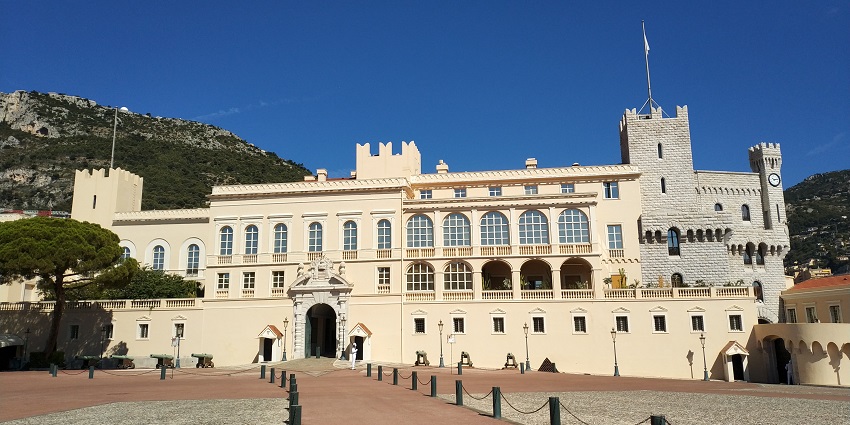
Photo: Pufacz / Wikimedia Commons
This palace sits at the highest point of Monaco-Ville and has stood here since the 12th century. It was first used by Genoese soldiers, then taken by François Grimaldi in 1297 during a surprise night raid. Over the years, it became the official home of the ruling family. From the outside, it is like a fortress with stone walls and square towers but inside, it’s a different world, filled with painted ceilings, detailed furniture, and royal symbols. The Throne Room features a mural of Alexander the Great, and a small museum section displays Napoleon’s personal items. During the summer months, people can visit the State Apartments and walk through the decorated halls. Just before noon, guards march across the square in front of the palace.
Location: Monaco-Ville
Timings: 10 AM – 6 PM
Best Time To Visit: April to October
2. Saint Nicholas Cathedral
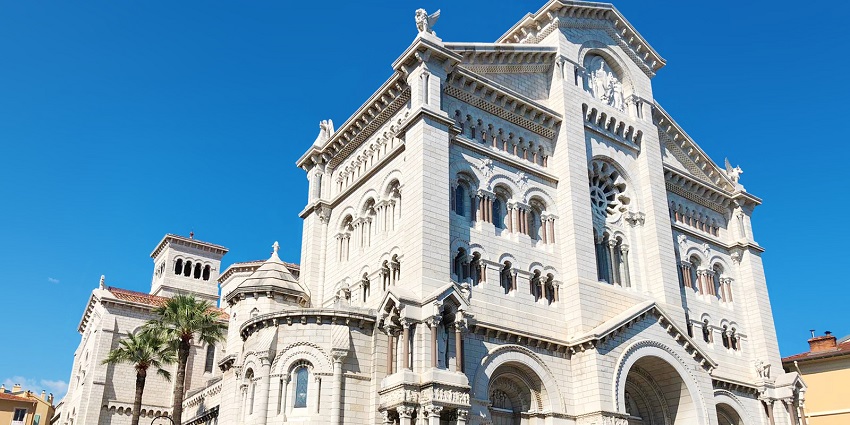
Photo: Rundvald / Wikimedia Commons
This cathedral is built on the site of Monaco’s original parish church, which dated back to the 13th century. The current building was finished in 1875 using pale stones brought from La Turbie, a nearby village. It is known as the final resting place of several Grimaldi family members, including Princess Grace and Prince Rainier III. The marble altar stands out for its size and polish, the pulpit is carved from white stone, showing patterns that were done by hand. A large pipe organ is used during church festivals and concerts.
Location: Monaco-Ville
Timings: 8:30 AM – 7 PM
Best Time To Visit: Early morning
3. Oceanographic Museum Of Monaco
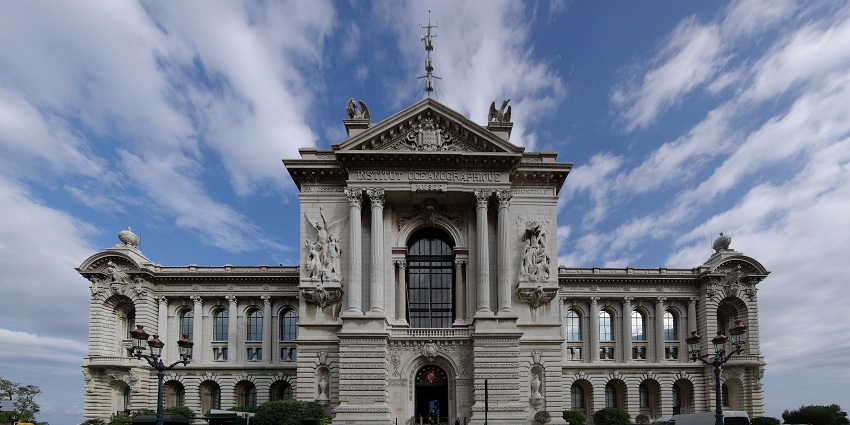
Photo: Berthold Werner / Wikimedia Commons
Built directly on the edge of a cliff in Monaco-Ville, the Oceanographic Museum has been part of the city’s coastline since 1910. It was founded by Prince Albert I, who spent years exploring the sea and wanted a space to share what he had learned. The building rises over 80 metres above the water, with a stone façade that blends into the rock face. From the outside, it looks more like a palace than a museum. Inside, it holds rooms full of preserved sea creatures, ship models, and old diving equipment. There is also a large aquarium where Mediterranean and tropical fish swim in tanks made to look like coral reefs. One of the highlights is a skeleton of a whale hanging from the ceiling and every corner tells part of Monaco’s relationship with marine research.
Location: Avenue Saint-Martin
Timings: 10 AM – 6 PM
Best Time To Visit: Weekdays before noon
4. Fort Antoine Theatre
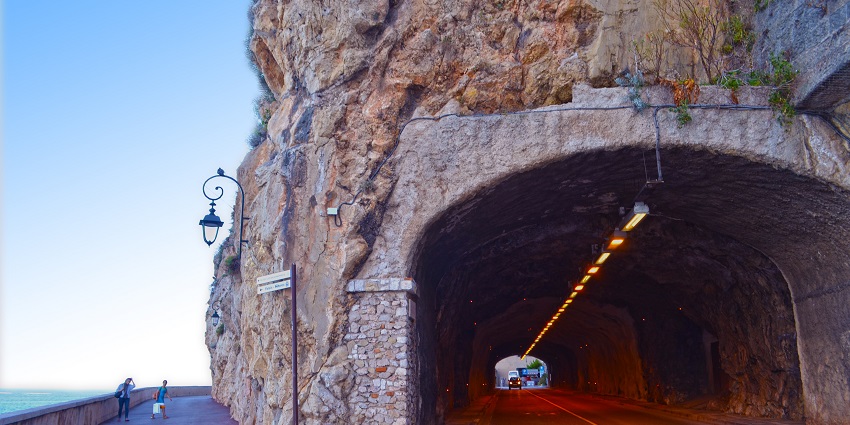
Photo: Subhashish Panigrahi / Wikimedia Commons / Image For Representation Only
This old fort stands at the edge of Monaco-Ville, facing the sea. It was built in the early 1700s as a place for soldiers to watch the coast and defend the city if needed. The site was damaged during the Second World War, but instead of restoring it as a military base, it was turned into an open-air theatre in the 1950s. Some parts of the original fort are still in place, like the stone walls and the guard tower. The seats are arranged in a half-circle facing a small stage. Events are held here during summer, mostly small concerts or plays. When no shows are running, people visit for the sea view and the peaceful space.
Location: Avenue de la Quarantaine
Timings: 10 AM – 1 PM, 2 PM – 5 PM
Best Time To Visit: Sunset hours
5. Statue du Prince Albert Ier
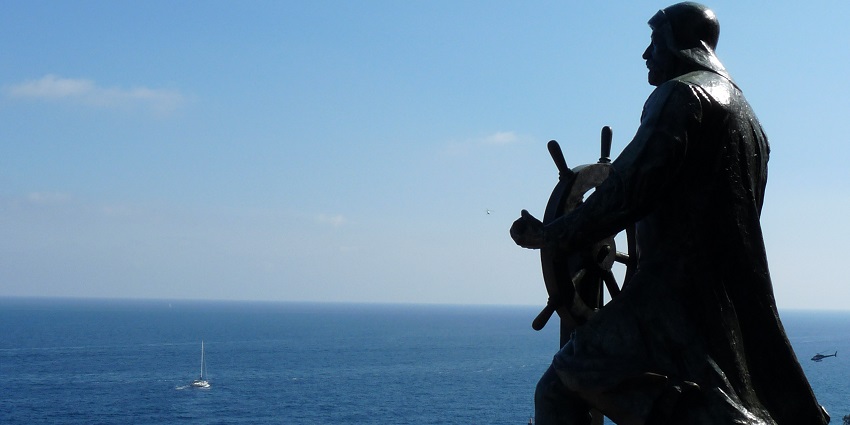
Photo: AwOiSoAk KaOsIoWa / Wikimedia Commons
This statue stands beside the Oceanographic Museum, overlooking the open sea. It represents Prince Albert I, known for his deep commitment to ocean exploration. Rather than in royal attire, he is shown at a ship’s wheel, dressed as a navigator. The statue honours his work as a sailor-scientist, not just a monarch. Prince Albert I led several marine expeditions and founded the museum behind the monument in 1910. The choice to show him steering a vessel reflects the hands-on nature of his research. During his reign, he worked closely with oceanographers and supported early studies of marine life and sea currents. The statue, placed right above the cliffs, faces the waters he once explored.
Location: Avenue Saint-Martin, Monaco-Ville
Timings: Open all day
Best Time To Visit: Late afternoon
6. Sainte-Dévote Chapel
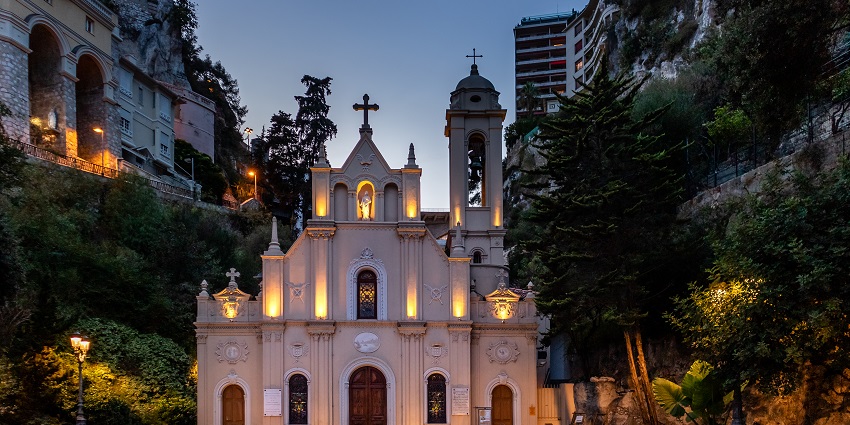
Photo: Matthew Hartley / Wikimedia Commons
Tucked in a narrow valley near the entrance to Monaco, Sainte-Dévote Chapel is one of the most cherished monuments in Monaco and religious sites in the principality. It is dedicated to Saint Devota, the patron saint of Monaco, who, according to legend, was a Christian martyr from Corsica. Her body was said to have washed ashore here in a small boat in the fourth century and then a chapel was built on the same spot to honour her memory. The current structure, rebuilt several times over the centuries, dates back to the 19th century and features a modest stone façade with a single bell tower. Every year on 26 January, the people of Monaco gather to celebrate Sainte Dévote’s Day by burning a symbolic boat in front of the chapel.
Location: Vallon Sainte-Dévote
Timings: 9 AM – 6 PM
Best Time To Visit: January
7. Monte Carlo Casino
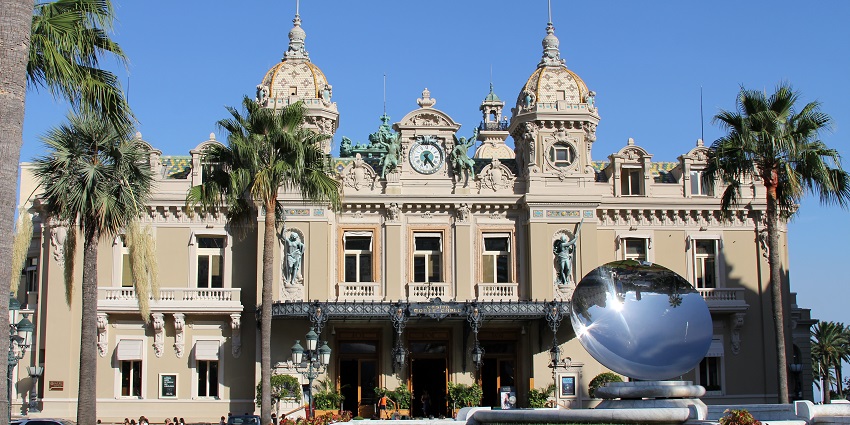
Photo: Fruitpunchline / Wikimedia Commons
The Monte Carlo Casino is more than just a gambling hall but one of the monuments in Monaco. It was built in the mid-19th century when Monaco was close to financial collapse. In 1863, under the direction of Princess Caroline, the state licensed François Blanc to run the casino. The building was designed by Charles Garnier and finished with sculptures, stained glass, and polished marble. Its Salle Garnier, an ornate concert space, still holds classical performances. The main gaming room features high ceilings and art panels framed in gold. While today it is visited for its elegance, the casino once attracted figures like Sarah Bernhardt and European nobility.
Location: Place du Casino
Timings: 2 PM – 2 AM
Best Time To Visit: Evening
8. Chapel Of The Visitation
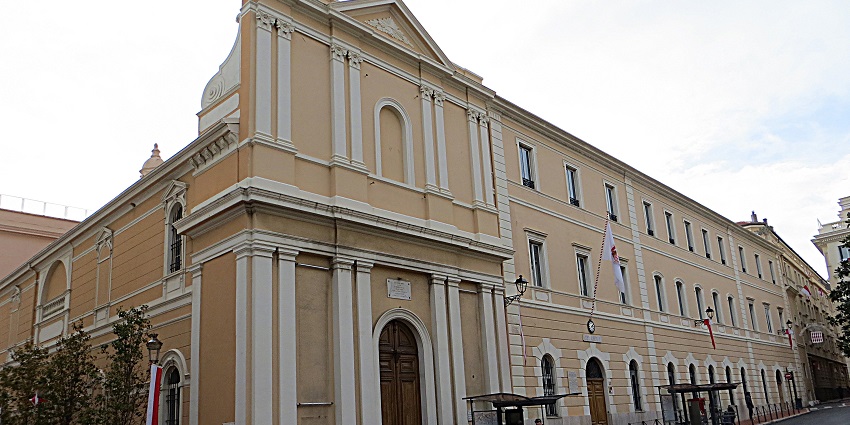
Photo: Mister No / Wikimedia Commons
The Chapel of the Visitation is along the quiet lanes of Monaco-Ville and is one of the lesser-known religious sites in the principality. Built in the 17th century, it reflects Baroque architecture with a modest pink façade and decorative stone detailing. For many years, it belonged to the Order of the Visitation of Holy Mary, a community of nuns. Inside, the chapel once held an important collection of sacred art, including works by Rubens, Zurbarán, and Ribera, making it a rare place where faith and classical painting met in a quiet setting. Although the art has since been moved to preserve it, the building remains intact and still carries a sense of its past purpose.
Location: Monaco-Ville
Timings: Varies
Best Time To Visit: During heritage or religious festivals
9. War Memorial, Monaco WWI And WWII Memorial
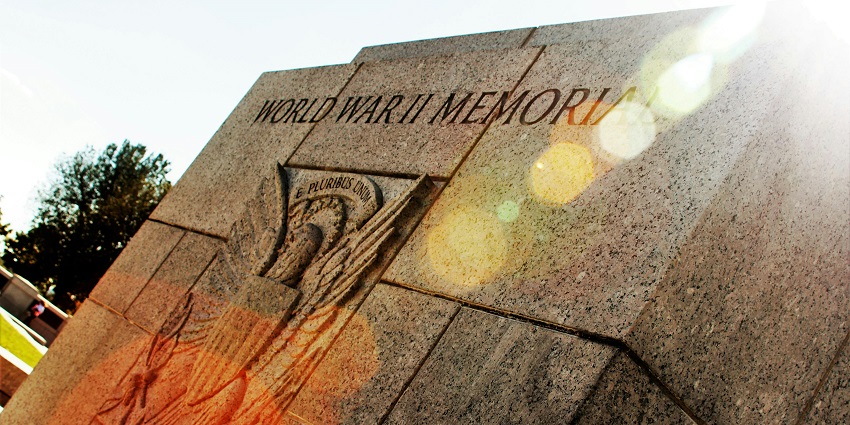
Photo: Kendall Hoopes / Pexels / Image For Representation Only
This memorial is located close to the Saint Nicholas Cathedral, built directly into the rock of Monaco-Ville. It was first completed in 1928 to remember local men who died in the First World War. After the Second World War, more names were added. The memorial is carved into a stone wall rather than raised like a statue. Names of those who lost their lives are listed clearly on stone slabs. A bronze figure of a soldier stands nearby in a quiet pose. There is also a carved palm leaf beside the names, meant to represent memory and peace.
Location: Near the Cathedral, Monaco-Ville
Timings: 24*7
Best Time To Visit: Daytime with cathedral visit
10. Monument A Charles III
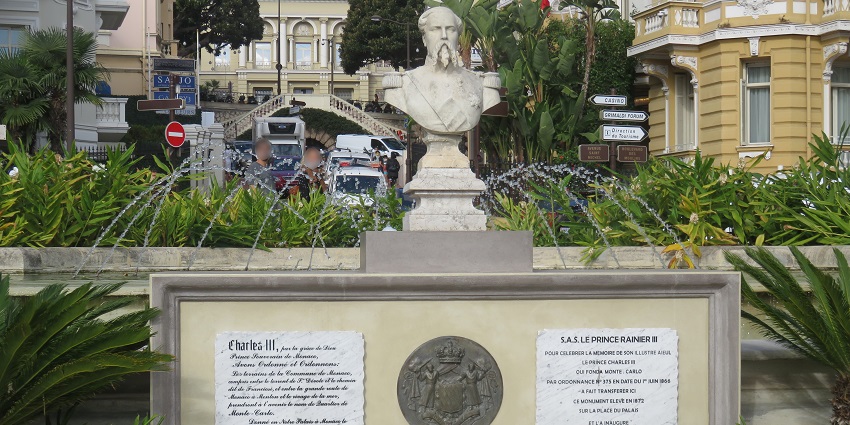
Photo: Anthony Levrot / Wikimedia Commons
This monument honours Prince Charles III, the ruler who transformed Monaco’s economy and founded Monte Carlo in the 19th century. Located near the Casino Gardens, it features a marble bust of the prince with two plaques beneath it. One is written in French, and the other explains the tribute in a simpler form. A round medallion in the centre shows the founding moment of Monte Carlo. Charles III ruled from 1856 to 1889 and is best known for legalising gambling, which led to the creation of the Monte Carlo Casino. The monument was placed here in 1966 by Prince Rainier III to mark 100 years since Monte Carlo’s establishment.
Location: Casino Gardens, Monte Carlo
Timings: 24*7
Best Time To Visit: Morning
Monaco’s past is kept alive through the places people still visit today. The monuments in Monaco include royal buildings, quiet chapels, and memorials with real meaning for the community. Each one shows a part of the country’s story, from its ruling family to the events that shaped daily life. These sites are not just part of history books; they are still used, visited, and respected. Seeing them in person gives a better picture of Monaco than any guide alone can offer. So plan your visit with TripXL to explore these monuments at your own pace, with every detail taken care of.
Cover Photo: H.R. Tsua / Wikimedia Commons


 WhatsApp
WhatsApp
 Twitter
Twitter









